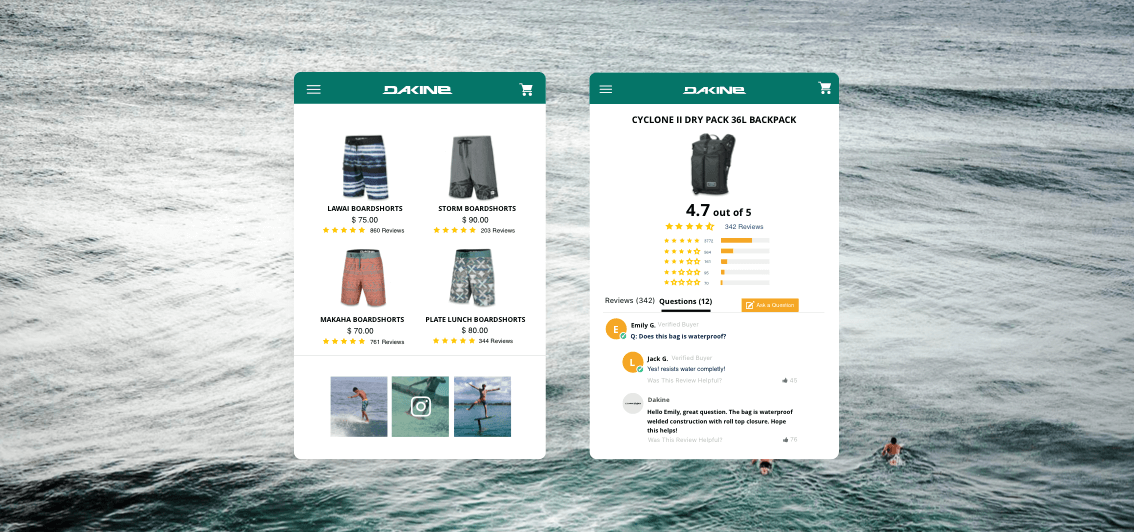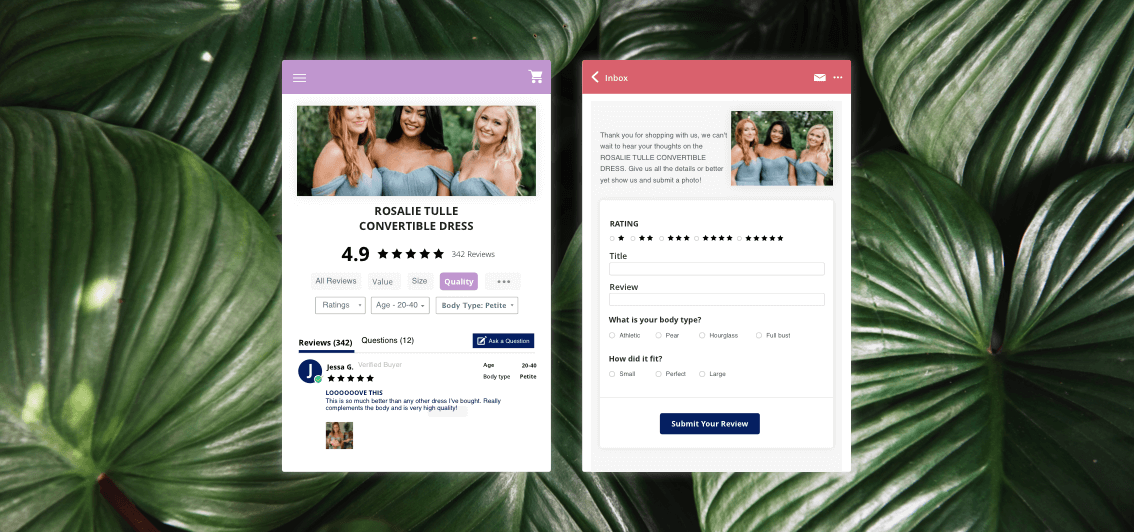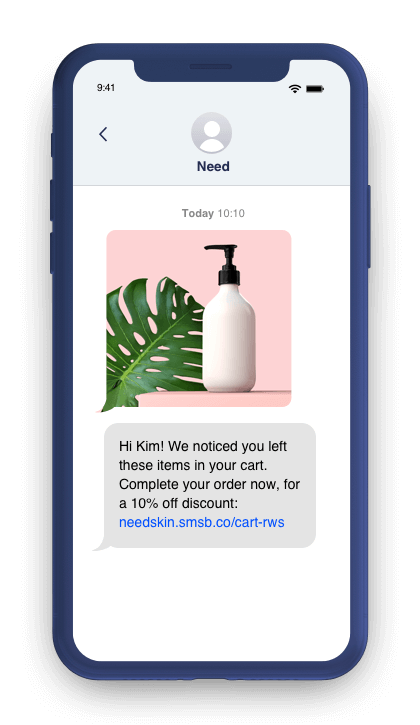eCommerce conversion rates are a source of pain for most online retailers. The average eCommerce conversion rate across industry verticals is only between 2 and 4%. That number could be higher or lower depending on your industry: gifts represent the higher end at nearly 5%, while consumer electronics are the lowest, at less than 1.5%. In simple terms, for every 100 shoppers that visit your site, only three will make a purchase.
Optimal conversion rates can mean the difference between profitability and failure. Abandoned shopping carts are one of the greatest frustrations of online retailers; even worse is a steady flow of site visitors who don’t even start the checkout process. Site visitors who don’t buy anything are wasted opportunities — you may have done all the hard work of attracting visitors but can’t close the deal.
In this article, we’ll discuss what eCommerce conversion rates are and share best practices for eCommerce conversion rate optimization.
What is conversion in eCommerce?
Conversion rate is the percentage of total users who take a desired action on a website. For example, you could assess the conversion rate for clicking a link or signing up for an email newsletter. In eCommerce, the goal is to get visitors to buy something. According to Google, the eCommerce conversion rate definition is “the ratio of transactions to sessions expressed as a percentage.”
In other words, eCommerce conversion rate is the percentage of total site visitors that buy something.
What is an eCommerce conversion rate?
While it’s clear from the previous section that an eCommerce conversion rate is simply a percentage that tells you how many web visitors are making a purchase, there’s more to it.
In the eCommerce industry, when a potential customer visits your website, they can convert into a lead, prospect, opportunity, or a customer. Let’s break this down.
- When a web visitor signs up for a newsletter or shares their telephone number with you, you’ve gotten yourself a lead.
- When you interact with that lead or dig for more information about that person, and he or she fits your target market, that person is a prospect.
- When these prospects are non-intrusively engaged, and they make an expression of interest to purchase, they become opportunities.
- When these opportunities finally make a purchase, they convert into customers.
While this is the ideal scenario in an eCommerce industry, the reality is more complex and nonlinear. People can visit your website and convert into customers immediately, ignoring the CTA you have on your homepage to download a newsletter. The take-home message is that eCommerce conversion is often unpredictable, but you can influence it if you have a proper strategy.
Why is your eCommerce conversion rate important?
Your eCommerce conversion rate is an important metric that tells you how your marketing and sales campaigns are doing. It also helps you with:
- Valuable insights about your order processing map
- Understanding how effective your website is at sustaining your customers’ attention
- Specific critical technical details related to web design and development.
By calculating your e-commerce conversion rate and aligning it with other metrics and insights, you can generate reports to help you make changes that ultimately lead to better website performance, reduced abandoned cart rates, and increased e-commerce conversion rates. Most importantly, a higher conversion rate means increased bottomline figures. That’s right. You make more profits. Hence, your marketing and business expenses are covered and reduced as well.
How are eCommerce conversion rates measured?
Now that you know an eCommerce conversion rate, it’s time to start measuring it. Thankfully, you don’t have to do this manually. Several tools help you do this automatically while generating essential insights that further help you increase your conversion rates. Here are some standard methods to measure your eCommerce conversion rates:
- Observe website behavior: Track website behavior and understand where the bottlenecks are. Usually, conversion rates drop on a specific page or during a particular function. This could be related to poor UX/UI. Work with your design and development team to fix those website-related issues.
- Social media data: Collect data from Facebook, Instagram, and other social tools to understand which functions and actions lead to conversions. Strengthen these functions using tools that help optimize your social media marketing.
- Frequency of measurement: Regardless of how you monitor your eCommerce conversion rate, it is essential to do it consistently. Weekly monitoring can help you understand if something is broken on your website. Monthly, quarterly, and yearly measurement of e-commerce conversion rates enables you to do several things — from rebranding to launching time-sensitive sales and loyalty programs.
How to calculate eCommerce conversion rates
As stated above, the eCommerce conversion rate definition is the percentage of site visitors who buy something. You can calculate this by dividing the number of visitors who purchase something by the total number of site visitors and multiplying that by 100.
Here’s what the formula looks like:
Visitors who buy something
÷ Total site visitors
x 100
_____________________
= Customer lifetime value
Based on this formula, if your site has 200,000 unique visitors a month and 4,000 buy something, your conversion rate is 2%.
What is a good eCommerce conversion rate?
It is challenging to declare what a good or even average eCommerce conversion rate could be. Websites often guard that information closely. Also, conversion rates vary by industry: low-cost items like food and apparel have higher conversion rates since customers are less hesitant to spend less money. High-cost goods and services like travel and home furnishings have lower conversion rates. In other words, it’s pretty hard to tell.
eCommerce conversion rate benchmarks
As we clearly said earlier in this article, conversion rates vary across industry verticals, and you should only be comparing your conversion rates with those of your peers. These conversion rate benchmarks help you assess how your marketing and sales campaigns are doing, how you compare against your competitors, and how you can improve those figures.
Average conversion rate by industry
High conversion rates are often seen in industry verticals where the products are not very expensive. When people aren’t afraid to make purchases, they quickly do so if the product is attractive enough. In the last quarter of 2022, these were the top-performing industry verticals when it came to conversion rates:
- Arts and Crafts – 3.84% — 4.07%
- Electrical tools – 1.31% — 2.49%
- Health and wellbeing – 1.87% – 4.20%
- Home and kitchen appliances – 1.72% — 3.00%
- Pet supplies – 2.20% — 2.53%
Average conversion rate by country
If you look at the numbers, you will see a disparity in e-commerce conversion rates by region. According to a survey conducted in 2022, the UK had high rates of e-commerce conversion, hovering around 4.1%. Although Italy is in Europe, too, it only had a conversion rate of 0.99%. This tells us that culture and socio-economic conditions often play a role in how quickly people convert into customers. Here are some figures:
- UK – 4.1%
- US – 2.3%
- Germany – 2.22%
- Denmark – 1.80%
- Italy – 0.99%
Based on these figures, we recommend that you closely study the socio-economic conditions of your target market and design copy and content that align with their cultural norms and buying-related beliefs.
Average conversion rate by channel/source
The channel used by shoppers may influence their buying behaviors, too. For instance, referrals have higher commerce conversion rates, which tells us people believe whom they trust. If their friends and family referred your products to them, they may be more inclined to buy them than someone who just discovered your brand.
- Referral marketing – 5.44%
- Direct marketing – 2%
- Email marketing – 2%
Looking at these figures, it makes sense to invest in referral marketing, especially by encouraging your existing customers to share referral codes with their friends and families for added benefits and discounts.
Average conversion rate by device
The device used by consumers can influence their behavior, too. Desktops and tablets are user-friendly, and people can browse your products on large screens. It’s also more intuitive to click their way to the checkout page, and that’s exactly what the statistics reveal. Here are some conversion rate figures by device type:
- Desktops – 3.64%
- Tablets – 3.43%
- Mobile devices – 2.49%
These figures underscore the importance of adopting an omnichannel strategy instead of a mobile-first or a more physical store-oriented conversion optimization strategy. You must ensure that your website functions well, that you are available over text, mobile app, and social media, and that you also have a number to call.
Average conversion rate by purchase type and price point
Pricing and brand popularity can greatly impact people’s purchase-related decisions. Although you may be tempted to reduce the price of your products, you may still see a higher eCommerce conversion rate. According to a study, attributes that increase conversion rates include:
- Brand popularity – By 4%
- Brand competitiveness – By 2.5%
- Discount – 2%
- Price – Less than 1%
These figures tell us that you should focus on improving your brand image and remaining ahead of your competitors. Pricing is the least important metric when it comes to e-commerce conversion rates. Yes, it may matter, but you should focus on building a trustworthy and credible brand in the larger picture.
Now that you’ve understood that a lot of factors can affect eCommerce conversion rate, you need to take the right steps to roll your best dice.
eCommerce Conversion Rate Optimization Tips
If you’re looking for ways to improve the conversion rate on your site, here are some tried-and-true methods.
1. Reduce load times
According to Google, over half of mobile users will leave a site if it takes more than three seconds to load. Bounce rate is connected to load time across platforms as well.
You can’t be responsible for your site visitors’ internet connection, but you can optimize your site. That begins with your website hosting and CMS. Additionally, make sure your images are compressed (high-quality images are essential for sales too. So, don’t remove them just to speed up load times).
2. Use responsive web design
When customers have problems while navigating a site due to a lack of mobile optimization, it can increase the bounce rate. Responsive web design refers to coding websites in such a manner that they automatically adapt to the screen sizes of users’ devices. This means a web visitor on a cell phone will automatically get the mobile site and not have to scroll around poorly-fitting desktop websites awkwardly.
Web design still tends to favor desktop, but mobile traffic hovers around 49.78% of web visits. So, get busy with revamping your website and implementing responsive web design.
3. Make your site easy to navigate
A high bounce rate or long browsing times mean your site is challenging to navigate. If users can’t find what they are looking for quickly, they can’t buy it. As we’ve noted before, find a balance between showing all your products and making them easy to find. Implement techniques such as drop-down navigation boxes and easy-to-search categories.
4. Improve product images
Although more people have shifted towards video content, product images still reign supreme in e-commerce. The adage that a picture speaks more than a thousand words is valid as long as you have high-quality photos. Imagine customers trying to zoom in, and they cannot, or worse, they see a pixelated image. They will simply not buy your product. Here’s what you can do:
- Ensure you have images of your products from different angles so customers can view them clearly.
- Refrain from falling into the trap of using AI-enhancers, as people can quickly detect if something seems off.
- Optimize images for web platforms so they don’t slow down your website.
- Try displaying products in a 3-dimensional (3D) format.
5. Put explainer videos on product pages
Younger generations prefer video platforms such as Instagram reels, TikTok, YouTube shorts, and other similar channels these days. Although textual content and images are essential, explainer videos on product pages will help you quickly increase your conversion rates. A few suggestions:
- Make sure that your videos are detailed and made in high quality. High-quality cameras, tripods, and voice enhancers deliver crisp and entertaining videos.
- While you’re at it, remember to add subtitles for those who prefer to read what’s being said in the video.
- Share your explainer videos on all possible channels, including on product pages.
6. Improve website copy
If someone told you that content is dead and that it is no longer king, then they’re simply wrong. Excellent copy and content are essential and will always coexist with other forms of media. However, with the advent of AI, people can quickly spot content that seems inauthentic and artificial. You need to improve your existing website copy and ensure it aligns with your target demographics’ values and quirks. Some tips:
- Review all your existing content and refresh them.
- Write fresh content to enhance SEO and ensure that you draw in organic traffic.
- Ensure your ad copy and textual matter on landing pages are all top quality.
- Do not use AI to write your product descriptions. Instead, get it written by professionals who know what they’re doing.
7. Test different CTA placements
Call-to-action (CTA) buttons are central to managing your conversion optimization strategy. CTA buttons include text and a box where people can hover their cursors and click. Only when they click will you be able to achieve the desired outcome — and this can range from purchasing a product to signing up for a newsletter. Do the following regularly:
- Conduct A/B testing to understand where to place the CTA button.
- Use heat maps to understand how users interact with your website and place your CTAs accordingly.
- Conduct feedback surveys with actual customers regarding CTA buttons and take their opinions into account.
- Make sure you test your CTA copy, button style and design, and placement regularly to optimize your conversion rates.
8. Use user-generated content
User-generated content (UGC) like product reviews can be highly effective in nudging customers toward a purchase. According to Yotpo data, UGC can increase conversion rates by as much as 200%. For example, Dakine noticed that customers who interacted with UGC were 152% more likely to convert than those who didn’t.

The reason? Shoppers find customer reviews and photos to be more trustworthy than copy coming directly from your company. UGC on the homepage can reduce bounce rates and quickly establish trust, while UGC on category, product, and checkout pages can increase conversion rates.
But it’s not just about adding UGC to your site; you also need to consider the strategic use of this content. For example, bridal brand Revelry leveraged Yotpo’s Smart Filters to turn their hundreds of reviews into an asset that customers could sort by factors most relevant to them, like fit, quality, and style. As a result, Revelry saw a 7.6% widget conversion rate.

The takeaway is clear: Reviews and visual UGC are essential tools for increasing conversion rates.
9. Add social proof (customer reviews)
We don’t even need statistics to tell that people read reviews online before buying products. It is so essential that people may ignore your products and move on if you do not have positive reviews. At the same time, they can also detect if reviews seem artificially written or if they do not sound authentic. Hence, you need to have a social proof strategy that includes authentic customer reviews. Here’s what you can do to build your social proof:
- Encourage existing customers to write a review. We know this sounds basic, but trying always leads to success.
- Send reminders to customers requesting for reviews. Yotpo eCommerce Reviews platform, for example, helps you request for reviews in a friendly and non-intrusive manner. You can even request for photos and videos, which result in higher conversion rates.
- Attend to negative reviews authentically and try to fix the problem at hand. This shows that you care, and will help conversion rates.
- If you feel there are false and malicious reviews, seek professional help, which could include legal help or reputation management services.
10. Use scarcity and limited-time offers.
Consumers hate missing out on a deal. It’s basic human psychology to fear loss more than we value gain. You can clearly see this tendency when people eagerly grab limited-time eCommerce offers. By providing a temporary coupon code in a pop-up or an email, you can nudge your customers to purchase an item they’d previously only considered. The same is true when an item is shown to be low in stock.
11. Provide free shipping
Providing free shipping is one of the costliest ways to optimize eCommerce conversion rates, but also one of the most important. Baymard shows that a whopping 50% of consumers who abandoned items in an online shopping cart did so due to extra costs at checkout, such as shipping.
There are additional benefits that offset the costs. Studies have found that customers will spend more per order with free shipping (sometimes to meet minimums) and will wait longer for an order if shipping is free.
12. Add additional payment options
If you do not accept the payment option your customer prefers, they may abandon the incomplete purchase. Digital wallets are an increasingly popular way to increase eCommerce conversion rates due to their increased speed and convenience. Additionally, digital wallets are preferred by many mobile shoppers. Therefore, accepting payment forms like Apple Pay and Samsung Pay can both reduce friction and help attract mobile shoppers.
Installment options can also help move shoppers through the path to purchase. Tools like Klarna make it easy to allow customers to pay in installments. A $50 dress might seem like too much of a splurge, but if you can spread payments over months, that customer may be more likely to convert.

Subscriptions help diversify your payment options too. Allowing people to place orders that automatically renew and charge as they ship out is a big plus in today’s market, where most customers are looking for a convenient, hassle-free way of shopping.
13. Reduce steps in checkout
According to Facebook, “87% of consumers say that a ‘complicated’ checkout process will make them abandon their shopping cart.” One of the easiest ways to correct this is to reduce the number of pages in the checkout process. When possible, make checkout a single page. Ask for only essential customer information.
14. Add a security or trust seal to checkout
According to one study, 18% of consumers have abandoned a purchase at checkout because they did not trust the site with their credit card info. The same study found that any symbol indicating security on the checkout page can increase user trust. The most effective was the certification label from Norton, the web security firm (getting their seal on your checkout page requires purchasing a protection plan).
Trust seals from Google and The Better Business Bureau were also influential. However, these seals don’t denote technical protection, and you need to apply directly with these companies to get those badges.
15. Enable guest checkout
We know it’s standard practice to create customer accounts before they’re allowed to make purchases. This helps you collect email addresses and tailor marketing campaigns in the future. However, many people don’t like the idea of registering, especially if they believe they’re making a one-time purchase. Enable guest checkouts and watch your conversion rates skyrocket. Here’s what you need to do:
- Enable guest checkout
- Ask customers to register after they make a purchase
- Collect only the most basic information, such as email or phone number, and promise you will not bombard them with promotional emails/texts. Use these contact details to send transactional messages.
- Many of these people will eventually register on your website once they gain enough trust.
16. Use abandoned cart emails and texts
Reaching out to customers who have left unpurchased items in their online shopping cart is the most direct tactic to increase eCommerce conversion rates. Abandoned cart emails could be as simple as a reminder or involve more advanced branding, copy, and behavioral techniques (like the appeals to scarcity and limited time discussed previously). SMS texts for abandoned carts are another great way to engage shoppers.

17. Use chatbots to streamline customer service
Shopping bots can help simplify the path to purchase for both customers and brands. With bots, customers can get immediate access to simple information, like order status, shipping information, or where to find a product. This frees up human customer service agents to deal with more complex problems and quickly meet customer needs. Tools like Kik allow brands to implement conversational chatbots easily.
Many brands think that chatbots depersonalize user experience, but the truth is, most customers don’t mind them. According to Salesforce, 69% of consumers prefer using chatbots because they quickly answer simple questions.
18. Subscription programs as a retention strategy
Subscription programs can act as retention tools if you use them correctly. Always remember that those who sign up for subscription programs, such as subscribe and save, already like your product. Hence, these are your high-value customers that you need to engage, nurture, and build long-term relationships with. Here’s how you can use different kinds of subscription programs to increase conversion rates:
- Urge people to subscribe for monthly or fortnightly purchases, and use the opportunity to upsell and cross-sell products that are useful to them.
- Offer unique solutions that actually matter. For example, Yotpo empowers subscribers by enabling password-less login and personalized customer portals.
- Offer subscribe and save plans, which include offering discounts if they subscribe to purchasing a product they often buy at regular frequencies.
- Identify high-value customers and offer them membership benefits and additional perks.
- Use a subscription tool, such as Yotpo’s Shopify subscriptions app, to help manage your emails and text messages.
Improve your eCommerce optimization rate with Yotpo
Yotpo is a single platform that connects various solutions to help you win the customers you need. It enables you to implement essential conversion rate optimization strategies such as SMS marketing, loyalty & referrals, management of reviews and subscriptions, and sending out those fancy newsletters. It comes with several integrations and an impressive tech stack with which you can generate insights and make accurate forecasts. Every feature is built around a solution, and it’s all connected by a single philosophy — helping you earn, sustain, and retain high-value customers who convert. Contact us today to learn more about how Yotpo can help you enhance your e-commerce conversion rates.



